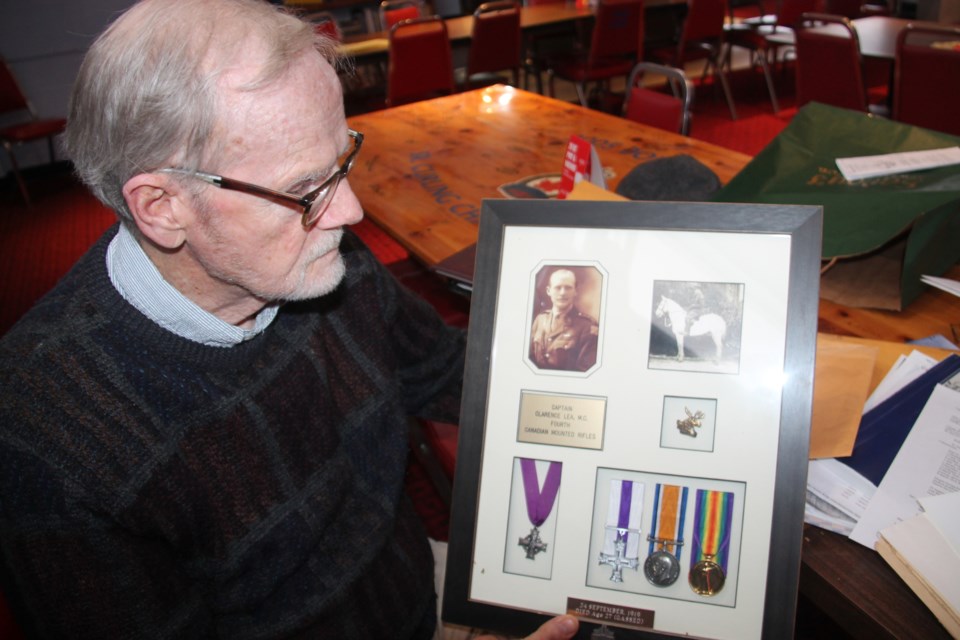On April 9, Canadians will mark the 100th anniversary of the Battle of Vimy Ridge.
The battle, which resulted in the Canadian capture of an important part of German-held territory in France, lasted from April 9 to 12, 1917 and claimed over 3,500 Canadian lives, with another 7,000 wounded.
The epic First World War victory is regarded as a highlight in Canadian history, a ‘coming of age’ for Canada.
The Sault’s Norm Stewart has a long family history of military involvement, and will be remembering Captain Clarence Lea (1892-1919), his great-uncle who served at Vimy.
Lea died at 27 after returning to Canada after the First World War, officially considered a victim of the influenza pandemic which swept throughout the world from 1918 to 1920, but Stewart suspects his health declined as a result of being the victim of an enemy gas attack.
Because he had not been formally demobilized from the military at the time of his death, Lea was buried with military honours in Toronto.
Stewart, 85, has kept detailed family history files which include documents and fascinating photos of his ancestors.
Photos of Lea on his horse and with fellow officers on the Western Front are included in the files.
Lea was born in Toronto, a descendant of pioneer families.
Unmarried, and officially listed as a farmer, Lea joined the military as a Lieutenant in 1914 and was promoted to Captain after surviving heavy fighting in Ypres in 1916.
In early 1917, he was awarded the Military Cross for his service in that battle before serving at Vimy Ridge.
Looking through his great-uncle’s records, Stewart told SooToday “I can prove through his records he was on the lines at Vimy Ridge, but he was with his regiment in just about every major battle (on the Western Front, not only Vimy).”
“To have gone through the war, only to die when he came home, is something else,” Stewart said.
“(At Vimy) he was responsible for moving supplies up to the boys who were fighting on the front lines, and as a Captain, he didn’t have to do that, but he went up there personally to make sure they got their supplies…he had been promoted but he wanted to be back with the boys, I guess,” Stewart told SooToday, his voice trailing off, a mixed look of sadness and pride in his eyes.
“I’m very proud my uncle was there, and being an ex-military member, I’m very proud of the effort Canada put in there…the Brits tried to take Vimy Ridge for a long time and they were unsuccessful and it was the Canadians that took it. It was a big turning point in the war and a big turning point in our history,” Stewart said.
Stewart himself served with the Royal Canadian Navy from 1953 to 1958, and later worked in electronics on several military projects in both Canada and the U.S., including the American cruise missile project.
A Winnipeg native, Stewart eventually moved to a farm at Rydal Bank in 1988, and has lived in the Sault for the last decade.
Stewart visited Vimy in 2010.
“When I saw the trenches there, because they left some of it the way it was, all churned up, a lot of bomb craters, I thought ‘those poor guys, what they went through,’…in spite of all the hardships they kept on going.”
“It’s very important to remember the effort put in to keep peace…but still, Canadians are among the best soldiers, sailors and airmen who have ever fought,” Stewart said.
“The kids over there in places like Holland know all about it, and it’s a shame that after all the bloodshed that up until recently our kids haven’t been told much about it in schools.”
